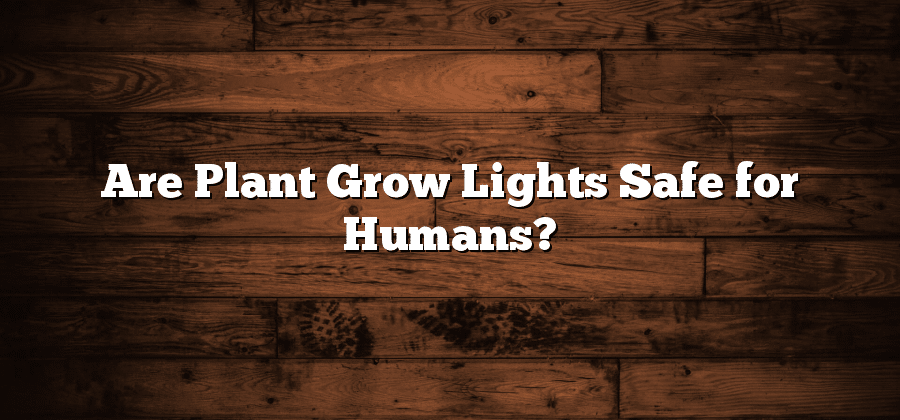Understanding the Potential Risks of Plant Grow Lights
I. Plant grow lights have become increasingly popular within the gardening community, offering a convenient and efficient way to provide light for indoor plants. However, it is important to understand the potential risks associated with their use. One major concern is the possibility of fire hazards. Plant grow lights generate heat, and if not properly ventilated or positioned, they can overheat and potentially ignite surrounding materials. This can lead to significant damage to property and could even pose a threat to personal safety.
II. Another risk to consider is the potential for electrical accidents. Improper installation or faulty wiring can increase the likelihood of electrical shocks or short circuits. It is crucial to ensure that all electrical components are of high-quality and meet safety standards. Additionally, it is vital to use caution when handling plant grow lights, as contact with water or other liquids can increase the risk of electrocution. As such, it is strongly advised to strictly adhere to manufacturer instructions and seek professional assistance if uncertain about the electrical integrity of the equipment.
Examining the Impact of Plant Grow Lights on Human Health
Plant grow lights have become increasingly popular among indoor gardeners and those interested in cultivating their own plants. While these lights provide the necessary spectrum of light for plants to undergo photosynthesis, there is growing concern about their potential impact on human health.
One major concern is the emission of blue light by plant grow lights. Blue light has been found to disrupt the production of melatonin, a hormone that helps regulate sleep patterns. Prolonged exposure to blue light in the evening can lead to difficulty falling asleep, decreased sleep quality, and even sleep disorders. This is particularly worrisome considering that many indoor gardens are located in bedrooms or other spaces where people spend a significant amount of time in the evening.
Determining the Effects of Plant Grow Lights on Vision
The use of plant grow lights has become increasingly popular in indoor gardening. These artificial light sources are designed to provide the necessary light spectrum for plant growth, allowing plants to thrive in environments where natural light may be limited. However, there are concerns about the potential effects of these grow lights on vision.
One of the main concerns regarding the effects of plant grow lights on vision is the intensity of the light emitted. Some of these lights emit high levels of blue light, which has been linked to potential harm to the eyes. Studies suggest that prolonged exposure to blue light can contribute to digital eye strain, which may cause symptoms such as dryness, irritation, and blurred vision. Additionally, it is believed that excessive exposure to blue light may increase the risk of developing age-related macular degeneration, a leading cause of vision loss. Thus, understanding the potential risks and taking appropriate precautions is paramount for individuals using plant grow lights in their indoor gardening endeavors.
Exploring the Potential Hazards of Long-Term Exposure to Plant Grow Lights
Plant grow lights have become increasingly popular among indoor gardeners and plant enthusiasts. These lights are designed to mimic the sunlight spectrum and provide plants with the necessary light energy for photosynthesis. However, it is crucial to understand the potential hazards associated with long-term exposure to these lights.
One concern is the emission of ultraviolet (UV) radiation. While plant grow lights emit lower levels of UV radiation compared to traditional fluorescent lights, prolonged exposure to UV rays can still pose a risk to human health. Studies have shown that excessive exposure to UV radiation can lead to skin damage, including sunburn, premature aging, and an increased risk of skin cancer. Therefore, it is essential for individuals who work or spend a significant amount of time near plant grow lights to take necessary precautions to protect their skin from UV radiation.
Investigating the Impact of Plant Grow Lights on Sleep Patterns
Plant grow lights have become increasingly popular among avid gardeners and indoor plant enthusiasts. These artificial lights provide the necessary wavelengths and intensity to support plant growth and development. However, the impact of plant grow lights on sleep patterns is an area of concern that merits further investigation.
Preliminary studies suggest that exposure to plant grow lights, particularly those with higher levels of blue light, may disrupt sleep patterns. Blue light has been shown to suppress the production of melatonin, a hormone that regulates the sleep-wake cycle. Disruptions in the sleep-wake cycle can lead to difficulties falling asleep, staying asleep, or achieving restorative sleep. It is important to note that the exact impact of plant grow lights on sleep patterns may vary depending on factors such as light intensity, duration of exposure, and individual sensitivity to light. Further research is needed to understand the specific mechanisms through which plant grow lights affect sleep patterns and to develop strategies for mitigating any potential negative effects.






